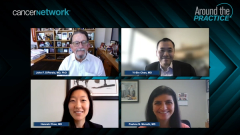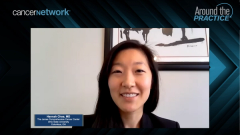
Counseling Patients on the Long-Term Management of GVHD
Thought leaders in stem cell transplant and cellular immunotherapy share insights into how they counsel patients about the challenges associated with the long-term management of chronic GVHD.
Episodes in this series

Transcript:
John F. DiPersio, MD, PhD: Let me ask you, Hannah: You have a patient in clinic, and a patient who starts to develop chronic GVHD [graft versus host disease] comes in after being away for a while and has developed some signs and symptoms of chronic GVHD. And they ask you, “What's going to happen to me? We talked about maybe the reduction in risk of recurrence in a patient in remission with chronic GVHD, but what's going to happen to me over time? Is this going to affect my life? Am I going to be alive in 10 years? In 20 years?” What do you tell them?
Hannah Choe, MD: It depends on the severity of the chronic GVHD and organ involvement. Specific organs that we know often cause a little bit more trouble are lungs, bronchiolitis, liver. This can be a little bit more difficult. Scleroderma remains a challenging part of chronic GVHD. Certainly, there are specific organ systems that are more challenging than others that contribute more to reduction in quality of life. I would say for the average chronic GVHD patient, it depends on the response to therapies and tolerance of therapies. There is, unfortunately, sort of an acceptance, I think, that has to occur with having now a long-term condition because the average is 2 and a half to 3 years requiring immunosuppression after the initial diagnosis of chronic GVHD so it's certainly a long-term and a long-haul sort of situation that can in certain cases really reduce functional capacity in some cases, again, depending on the severity. Other patients' response to therapy may be more prolonged, more durable responses, good tolerance to current therapy therapies that may be able to sustain quality of life. Chronic GVHD still remains the major cause of late mortality for nonrelapsed patients. Overall, it's generally a long-term piece of chronic immunosuppression.
John F. DiPersio, MD, PhD: But you don't think it's obviously a death sentence? You're saying that there's a way to manage this over a long period of time and we should probably provide people with some level of optimism and hope that number 1, the therapies we have can help and at least slow down the rate of progression, and those new therapies are being developed all the time. What do you think, Pashna?
Pashna N. Munshi, MD: I agree. I think it's just encouraging to see all this activity in the GVHD world in the last couple of years even. We didn't have that, and I think it's just going to expand even more with earlier lines of therapy, maybe a combination or trying to understand the sequence of these therapies. One important point that patients do need to realize is that they're at high risk of second primary neoplasms so to speak. With the immune system still being suppressed, if you will, they are at risk for age-related malignancies as well as other malignancies so they're quite not out of the woods in that regard. I think just an overall survivorship sort of paradigm for patients is good.
Transcript edited for clarity.
Newsletter
Stay up to date on recent advances in the multidisciplinary approach to cancer.






















































































